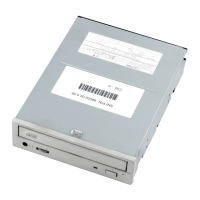Introduction 3
Introduction
Congratulations on the purchase of your Toshiba XM-6201 CD-ROM drive. Read
carefully through this manual in order to install the drive and learn how to use it.
This manual guides you gently through the process of setting up the drive and fitting the
drive into your computer. But don’t worry! Take one step at a time and read each section
all the way through before you start.
But first, a word about
speed!
Just How Fast is
FAST
?
To make a CD-ROM drive qualify as a “32-speed” or “32X” drive, the manufacturer
needs only make the disk spin at 32 times the speed of a “single-speed” drive. So calling
a drive 32X gives the buyer very little information.
The real speed of a CD-ROM drive – how fast the drive delivers the data to your
computer – is governed by three main factors:
Seek time and access time have a major influence on applications which read data in
many small, non-contiguous blocks, such as reference works and games. These times are
measured in milliseconds (msec) – the lower the figure the better.
Sustained transfer rate affects applications which read a large amount of data in one go
- such as when you install software from CD or when you transfer large archived files.
This speed is measured in kilobytes per second (kB/sec) - the higher the figure the better.
From Audio to Data
CD-ROM drives were developed from audio CD technology, in which a constant speed
is required. Early CD-ROM drives used the same spin speed as audio CD players, 200
RPM. This gave a data transfer rate of 150 kB/sec. This was called a “single-speed”
drive.
While 150 kB/sec is ideal for audio, it has proved too slow for applications such as
databases, games, video and large archived files. Manufacturers have since increased the
seek time
how long it takes to find a particular piece of data on
the disk
access time
the average time taken to position the laser head and
start transferring data
sustained transfer rate
how fast the drive can read data from the disk and
pass it to your computer

